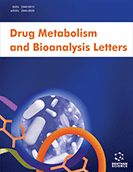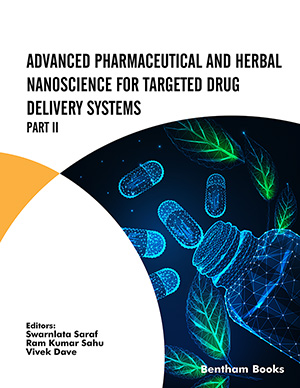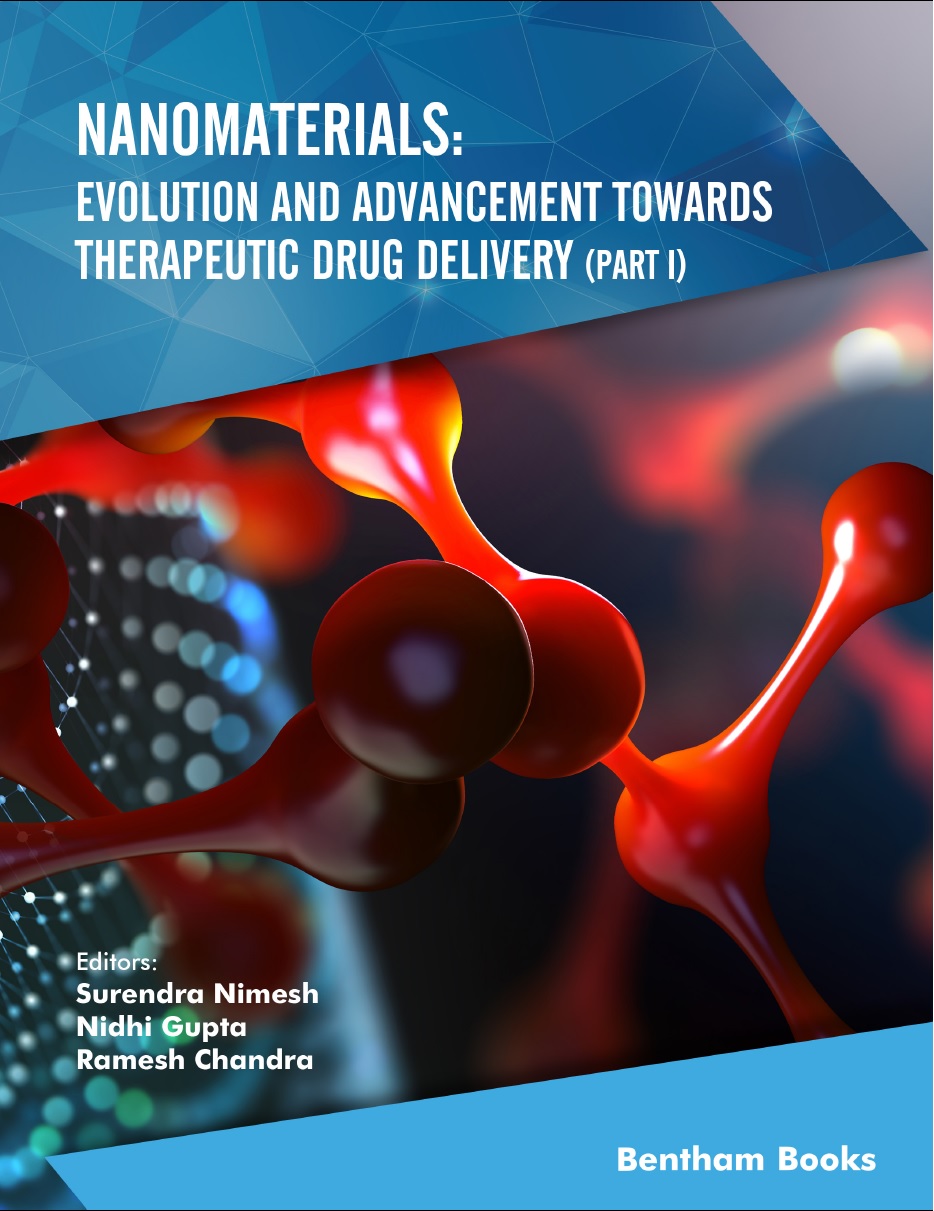Abstract
At present, people and patients worldwide are relying on the medicinal plant as a therapeutic agent over pharmaceuticals because the medicinal plant is considered safer, especially for chronic disorders. Several medicinal plants and their components are being researched and explored for their possible therapeutic contribution to CNS disorders. Thymoquinone (TQ) is one such molecule. Thymoquinone, one of the constituents of Plant Nigella Sativa, is effective against several neurodegenerative diseases like, Alzheimer's, Depression, Encephalomyelitis, Epilepsy, Ischemia, Parkinson's, and Traumatic. This review article presents the neuropharmacological potential of TQ's, their challenges, and delivery prospects, explicitly focusing on neurological disorders along with their chemistry, pharmacokinetics, and toxicity. Since TQ has some pharmacokinetic challenges, scientists have focused on novel formulations and delivery systems to enhance bioavailability and ultimately increase its therapeutic value. In the present work, the role of nanotechnology in neurodegenerative disease and how it improves the bioavailability and delivery of a drug to the site of action has been discussed. There are a few limitations to developing novel drug formulations, including solubility, pH, and compatibility of nanomaterials. Since here we are targeting CNS disorders, the bloodbrain barrier (BBB) becomes an additional challenge.
Hence, the review summarized the novel aspects of delivery and biocompatible nanoparticles-based approaches for targeted drug delivery into CNS, enhancing TQ bioavailability and its neurotherapeutic effects.
Keywords: CNS disorder, thymoquinone, neuropharmacological, bioavailability, BBB, encephalomyelitis.
[http://dx.doi.org/10.15171/jhp.2018.01]
[http://dx.doi.org/10.4103/nms.nms_109_17]
[http://dx.doi.org/10.1126/science.1217410] [PMID: 22745417]
[http://dx.doi.org/10.1111/j.1365-2621.2006.01417.x]
[http://dx.doi.org/10.1016/S2221-1691(13)60075-1] [PMID: 23646296]
[http://dx.doi.org/10.2174/157017812803901890] [PMID: 24883052]
[http://dx.doi.org/10.1016/j.ijbiomac.2016.03.019] [PMID: 26976069]
[http://dx.doi.org/10.1016/j.intimp.2005.06.008] [PMID: 16275613]
[http://dx.doi.org/10.3390/molecules19055925] [PMID: 24815311]
[http://dx.doi.org/10.5897/JMPR10.852]
[http://dx.doi.org/10.1016/j.jep.2013.05.004] [PMID: 23707331]
[http://dx.doi.org/10.1016/S0014-2999(00)00340-X] [PMID: 10913589]
[http://dx.doi.org/10.2147/JIR.S258991] [PMID: 32821147]
[http://dx.doi.org/10.3797/scipharm.1304-19] [PMID: 24634848]
[http://dx.doi.org/10.4236/ojcm.2014.41002]
[http://dx.doi.org/10.5897/AJPP2013.3968]
[http://dx.doi.org/10.1002/ptr.5634] [PMID: 27169925]
[http://dx.doi.org/10.15171/apb.2016.044] [PMID: 27766216]
[http://dx.doi.org/10.1155/2019/3702518]
[http://dx.doi.org/10.33588/rn.5805.2013314]
[http://dx.doi.org/10.3109/09687688.2014.937468] [PMID: 25046533]
[http://dx.doi.org/10.1016/j.addr.2011.10.007] [PMID: 22100125]
[http://dx.doi.org/10.2174/157015912804499456] [PMID: 23730260]
[http://dx.doi.org/10.1016/j.eplepsyres.2013.08.013] [PMID: 24050973]
[http://dx.doi.org/10.1155/2013/238428] [PMID: 25937958]
[http://dx.doi.org/10.1016/j.bbrc.2012.11.139] [PMID: 23537659]
[http://dx.doi.org/10.2174/1568007033482959] [PMID: 12769802]
[http://dx.doi.org/10.1016/B978-044452809-4/50164-2]
[http://dx.doi.org/10.1007/s10571-013-9982-z] [PMID: 24101432]
[http://dx.doi.org/10.1016/j.neuropharm.2012.10.019] [PMID: 23168113]
[http://dx.doi.org/10.1155/2013/952719] [PMID: 24058919]
[http://dx.doi.org/10.15283/ijsc16021] [PMID: 27572711]
[http://dx.doi.org/10.1016/j.bbrep.2018.12.005] [PMID: 30623116]
[http://dx.doi.org/10.1016/j.phymed.2020.153324] [PMID: 32920292]
[http://dx.doi.org/10.1016/S1734-1140(11)70577-1] [PMID: 21857076]
[http://dx.doi.org/10.1007/s11011-021-00789-2] [PMID: 34309746]
[http://dx.doi.org/10.1001/jama.1995.03530190025030] [PMID: 7474219]
[PMID: 12358212]
[http://dx.doi.org/10.1097/PSY.0b013e3181907c1b] [PMID: 19188531]
[http://dx.doi.org/10.1016/j.biopsych.2009.09.033]
[http://dx.doi.org/10.2174/138955711795906888] [PMID: 21699486]
[http://dx.doi.org/10.4103/0975-7406.99052] [PMID: 22923964]
[http://dx.doi.org/10.1111/jfbc.13348] [PMID: 32618005]
[http://dx.doi.org/10.1016/j.seizure.2010.01.010] [PMID: 20149694]
[http://dx.doi.org/10.1111/j.1471-4159.2010.07013.x] [PMID: 21219330]
[http://dx.doi.org/10.1515/tnsci-2017-0003] [PMID: 28400978]
[PMID: 25932190]
[http://dx.doi.org/10.1007/s12031-012-9886-2] [PMID: 23008120]
[http://dx.doi.org/10.1371/journal.pone.0024966] [PMID: 21949812]
[http://dx.doi.org/10.1016/j.yebeh.2003.11.003] [PMID: 14725842]
[http://dx.doi.org/10.1007/s12031-013-0043-3] [PMID: 23794216]
[http://dx.doi.org/10.1212/WNL.37.8.1281] [PMID: 3614648]
[http://dx.doi.org/10.1097/00004647-200101000-00002] [PMID: 11149664]
[http://dx.doi.org/10.2174/1871527317666180702101455] [PMID: 29962349]
[PMID: 25587320]
[http://dx.doi.org/10.5578/turkjsurg.4583] [PMID: 32637881]
[http://dx.doi.org/10.1016/j.tins.2010.09.004] [PMID: 20961626]
[http://dx.doi.org/10.1016/j.cnr.2006.09.006] [PMID: 18060039]
[PMID: 25630775]
[http://dx.doi.org/10.1016/j.neuint.2019.04.014] [PMID: 31028778]
[http://dx.doi.org/10.3389/fphar.2020.615598] [PMID: 33519481]
[http://dx.doi.org/10.1016/j.intimp.2017.04.018] [PMID: 28458100]
[http://dx.doi.org/10.1002/jnr.21252] [PMID: 17385716]
[http://dx.doi.org/10.1016/S1474-4422(15)70016-5] [PMID: 25792098]
[http://dx.doi.org/10.1016/j.neures.2006.02.013] [PMID: 16600409]
[http://dx.doi.org/10.1002/ptr.6982] [PMID: 33325602]
[http://dx.doi.org/10.1177/0960327118755256] [PMID: 29405769]
[http://dx.doi.org/10.1016/j.toxlet.2017.05.018] [PMID: 28526446]
[http://dx.doi.org/10.1016/j.drudis.2018.01.043] [PMID: 29374534]
[http://dx.doi.org/10.1002/bmc.1492] [PMID: 20734352]
[http://dx.doi.org/10.3389/fphar.2017.00656] [PMID: 28983249]
[http://dx.doi.org/10.3390/nu10101369] [PMID: 30257423]
[http://dx.doi.org/10.1155/2018/1209801] [PMID: 29743967]
[http://dx.doi.org/10.1080/03639045.2019.1660366] [PMID: 31448962]
[http://dx.doi.org/10.1016/j.ijpharm.2016.07.038] [PMID: 27451272]
[http://dx.doi.org/10.1080/21691401.2018.1451873]
[http://dx.doi.org/10.1016/j.cbi.2017.07.014] [PMID: 28734741]
[http://dx.doi.org/10.1155/2016/2571060] [PMID: 27725936]
[http://dx.doi.org/10.1016/j.msec.2017.03.088] [PMID: 28482534]
[http://dx.doi.org/10.3109/10717544.2012.727500] [PMID: 23043626]
[http://dx.doi.org/10.1016/j.bcp.2010.01.023] [PMID: 20105430]
[http://dx.doi.org/10.2147/IJN.S44108] [PMID: 23818776]
[http://dx.doi.org/10.3109/02652048.2015.1134689] [PMID: 26982435]
[http://dx.doi.org/10.1186/s13065-020-0664-x] [PMID: 32083254]
[http://dx.doi.org/10.2147/IJN.S35329] [PMID: 23180965]
[http://dx.doi.org/10.1016/j.ijpharm.2010.08.008] [PMID: 20713137]
[http://dx.doi.org/10.1080/17425247.2020.1730808] [PMID: 32077770]
[http://dx.doi.org/10.1155/2014/869269] [PMID: 25136634]
[http://dx.doi.org/10.1186/s12951-018-0392-8]
[http://dx.doi.org/10.2174/187152712799960781] [PMID: 22229324]
[http://dx.doi.org/10.1016/j.jconrel.2005.07.024] [PMID: 16246446]
[http://dx.doi.org/10.1016/j.jconrel.2012.04.044] [PMID: 22609350]
[http://dx.doi.org/10.1208/s12248-012-9339-4] [PMID: 22407288]
[http://dx.doi.org/10.7324/JAPS.2019.90817]
[http://dx.doi.org/10.1177/2041731419897460] [PMID: 32180936]
[http://dx.doi.org/10.1016/j.addr.2011.12.006] [PMID: 22210134]
[http://dx.doi.org/10.3390/jcm7120490]
[http://dx.doi.org/10.1201/b15632]
[http://dx.doi.org/10.1016/j.jconrel.2016.05.044] [PMID: 27208862]
[http://dx.doi.org/10.1517/17425247.2015.1041374] [PMID: 25912814]
[http://dx.doi.org/10.1208/s12249-015-0391-0] [PMID: 26304932]
[http://dx.doi.org/10.1177/1934578X1501000821] [PMID: 26434126]
[http://dx.doi.org/10.1002/jps.23138] [PMID: 22467430]
[http://dx.doi.org/10.1016/j.phymed.2010.01.011] [PMID: 20171066]
[http://dx.doi.org/10.1007/s12154-010-0052-4] [PMID: 22229047]
[http://dx.doi.org/10.1055/s-0030-1264649]
[http://dx.doi.org/10.1002/ptr.2766] [PMID: 19277968]
[http://dx.doi.org/10.1080/10715760600978815] [PMID: 17364941]
[PMID: 19385451]
[PMID: 12760491]
[http://dx.doi.org/10.2147/IJN.S114205] [PMID: 27877037]























